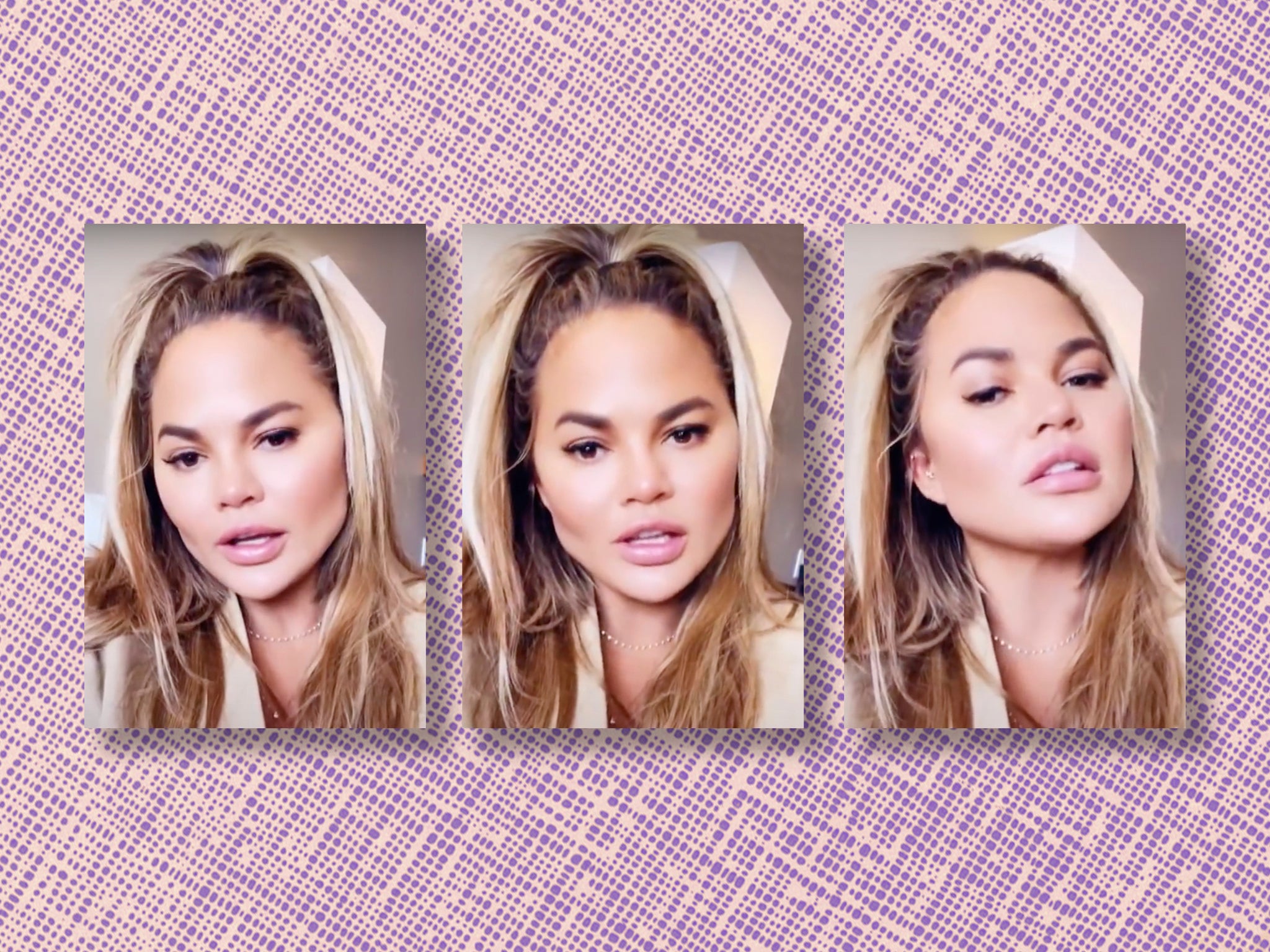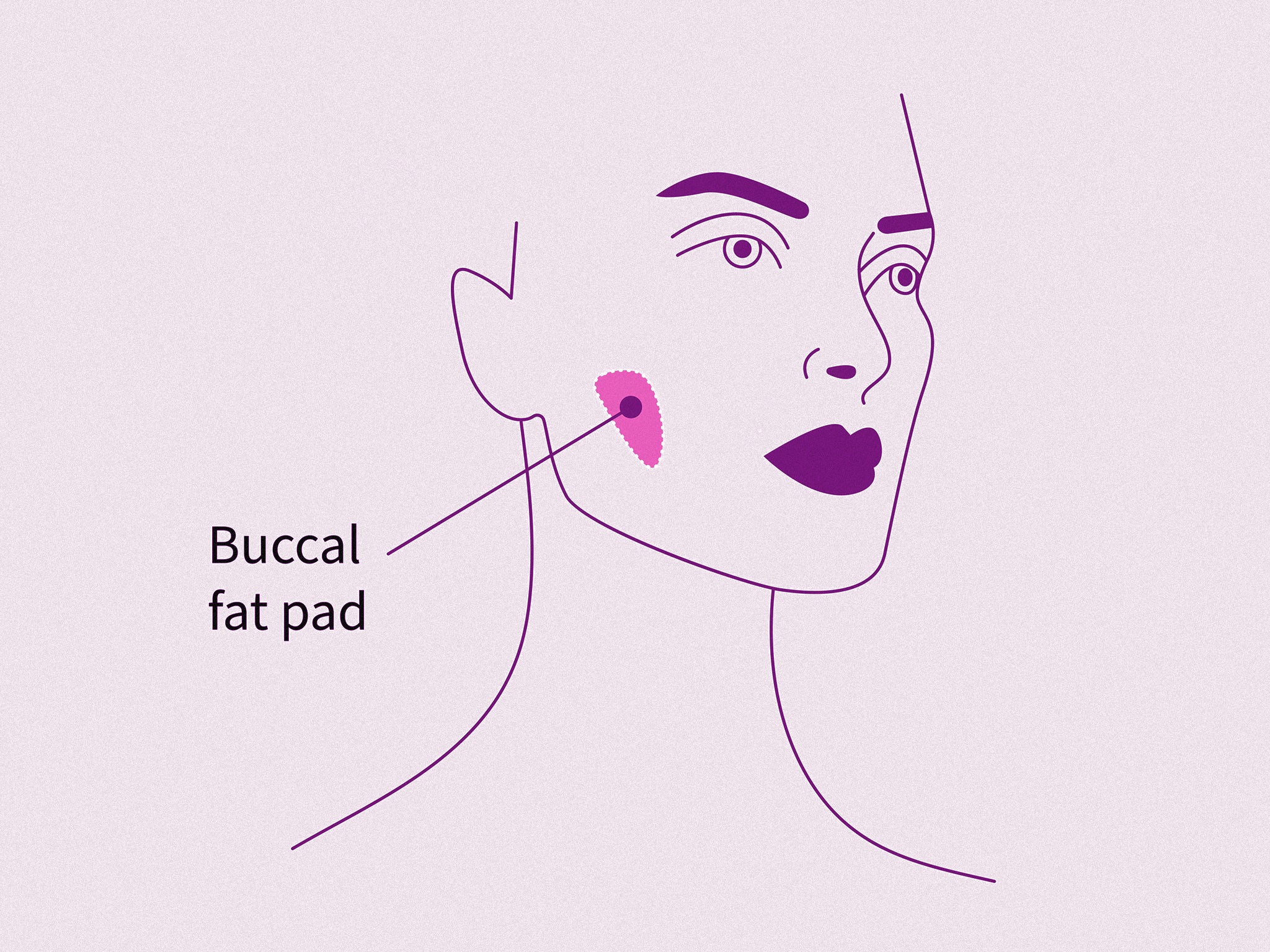Buccal fat removal was 2022’s strangest and most secretive beauty trend
Chrissy Teigen may be one of the only stars to talk about it but celebrities everywhere are cutting out their buccal fat – whatever that is. Once you know what you’re looking for, you see it constantly. Ellie Muir investigates an aesthetic trend that even some professionals aren’t convinced by


Your support helps us to tell the story
From reproductive rights to climate change to Big Tech, The Independent is on the ground when the story is developing. Whether it's investigating the financials of Elon Musk's pro-Trump PAC or producing our latest documentary, 'The A Word', which shines a light on the American women fighting for reproductive rights, we know how important it is to parse out the facts from the messaging.
At such a critical moment in US history, we need reporters on the ground. Your donation allows us to keep sending journalists to speak to both sides of the story.
The Independent is trusted by Americans across the entire political spectrum. And unlike many other quality news outlets, we choose not to lock Americans out of our reporting and analysis with paywalls. We believe quality journalism should be available to everyone, paid for by those who can afford it.
Your support makes all the difference.Last year, Chrissy Teigen posted a selfie to Instagram. She had a newly sculpted face. A chisel had been taken to her lower cheeks. Her jawline appeared to be in an angular “V” shape. “I did that buccal fat removal thing here,” she said in a video, while pointing out her freshly hollowed cheeks. Meet the hottest new beauty trend: buccal fat removal, a surgical procedure that can alter the entire structure of our faces.
In the quest to achieve the ultimate in snatched faces, celebrities and deep-pocketed civilians are getting the fat removed from their cheeks to permanently contour their money-makers. Teigen is one of the few stars to actually admit to having the procedure done, leading fans to speculate on social media which of their favourite stars have yielded to face-gouging. Before and after pictures are scrutinised. Is it a filter or a surgical knife? Natural ageing or unnatural tweaking? Others, however, are more perplexed by the arrival of yet another barely achievable beauty standard for women – and some men – to measure themselves against. “What the f*** is buccal fat,” tweeted one person. “How are they still inventing new flaws for us?” Another wrote: “Wake up babe new surgery just dropped in Hollywood: jaw filler and buccal fat removal.”
We all have buccal fat. It’s a pad of very normal flesh found in between your cheekbones (known as your zygomatic arch) and your jawline. Its removal happens through a surgical operation, with a doctor going into a patient’s mouth and removing the fat from the cheeks from the inside out. It leaves behind no marks or scarring on the face itself. The treatment is also purely aesthetical – there are no health benefits to removing your buccal fat. The result is hard to miss: a person’s chin and jawline are made razor sharp, their cheekbones so defined that it’s as if they’re permanently sucking on a lemon.
Fleeting beauty trends dominated 2022. The formerly popular Brazilian butt lift – a fat transfer procedure that helps patients achieve a fuller, rounder buttock contour – has been declared dead. Razor-thin Nineties eyebrows made a comeback. “Heroin chic” is apparently on a flying visit, with signs suggesting it’ll explode back into the mainstream next year. What’s worrying about the buccal fat trend (or lack thereof), however, is the permanency of the procedure. Particularly in a beauty industry that thrives off the regurgitating of cyclical, short-lived fashions. For example, the skinny eyebrow was culled off in 2010 by the bushy Cara Delevingne brow. Now, in 2022, the threaded brow is having a renaissance. It’s a lot to keep up with, but aided by the fact that eyebrows tend to grow back. Buccal fat and the structure of our cheeks probably won’t. And when plump and youthful, collagen-filled baby faces are inevitably made conventionally sexy in 2032, those with hollowed-out cheekbones might be wishing for their buccal back.
At 111 Harley Street, a plastic surgery clinic in London’s famed aesthetics district, buccal fat removal was the third most popular procedure in 2022, behind rhinoplasty and liposuction. It’s described as an “in and out” procedure, taking an alarmingly quick 30 minutes to do, all for around £4,500. Plastic surgeon Dr Yannis Alexandrides, the founder of the clinic, says that his doctors have performed 99 buccal fat procedures between 2020 and 2022, with 67 per cent of clients being women, and 33 per cent being men. He explains that some people who feel they have a “baby face” as adults can be “good candidates for buccal fat removal”, and that many clients have been influenced by beauty trends in popular culture. “Some see this trend in the media on their favourite models and celebrities and want to achieve a similar contoured look,” he says. “Contouring below the cheeks with makeup can only do so much.”
Other plastic surgeons, however, are sceptical about what’s motivating people to choose buccal fat removal. Dr Tunc Tiryaki, a consultant plastic surgeon at London’s Cadogan Clinic, refuses to perform buccal fat removal on his clients because he believes it’s the “wrong treatment” for achieving a defined face. “Buccal fat removal doesn’t create definition, it just creates emptiness between the cheek and the jawline,” he explains. On top of that, the irony of buccal fat removal is that as we age we naturally lose fat and collagen in our cheeks. Removing it early only accelerates the inevitable ageing process. “In the long run, when we get older, we lose volume in our cheeks,” Dr Tiryaki adds. “So patients start looking really gaunt, almost like ghosts. I wouldn’t recommend buccal fat removal to a patient trying to shape their face.”
Dr Tiryaki knows that social media plays a part in clients seeking plastic surgery. He also thinks interactive facial filters on apps such as Instagram or Snapchat might be behind the buccal fat removal boom – and the increasing popularity of looking really, really chiselled. “All filters are designed to make your face look ‘V shaped’ and more defined,” he says. “When you come back to reality, of course, this doesn’t correspond with our real anatomy.”

Striving for thin, sculpted faces pre-exists Instagram filters, though. Contouring is a makeup technique that dates back to the 1930s when makeup artists began shading actors’ faces so that they wouldn’t appear so flat on film. Contouring involves using hues of makeup darker than the subject’s skin tone, in order to create shadows on different parts of the face. In the 1990s, makeup artist Kevyn Aucoin (who created one of beauty’s most popular sculpting powders) was responsible for the chiselled look on many famous models and celebrities, including Madonna, Whitney Houston and Cher. In the early 2010s, Kim Kardashian repopularised it, posting her vigorous daily shading routine to her millions of followers in a video tutorial. Today, think of buccal fat removal as a way of making the temporary illusion of contouring actually permanent.
Victoria Kleinsman, a self-esteem expert and body love coach, regularly sees first-hand how temporary beauty trends – which are often rooted in the cult of thinness – affect how people perceive themselves. She works primarily with people struggling with body image issues and thinks the search for validation is at its root. “We believe that we get love and acceptance from thinness because that’s what society tells us,” she says. Kleinsman found her way into body image coaching after she spent 20 years struggling with an eating disorder. It nearly killed her. “I wanted to be thin because society told me that was how I’d get love and acceptance,” she explains. When we discuss buccal fat removal and all the trends that have come and gone in 2022, Kleinsman seems exhausted by it. She calls them “toxic” and “damaging”. “When is this going to stop?” she asks. “If we don’t start celebrating a range of faces and face shapes soon, the outcomes are going to be dangerous.”
Kleinsman adds that she’d never pass judgement on a client who wanted surgery but would always want them to understand why they desire such change in the first place. “Most people don’t take time to ask themselves why they might want surgery,” she says. “My job is to bring them back to self-love and acceptance. I ask them the magic question ‘why’ maybe four times. Because when we understand the roots of the reasoning, we can learn a lot about ourselves.”
What I find most eerie about watching a viral makeup look effectively morph into a permanent surgical treatment is that beauty standards will only continue to demand more from us. A few weeks ago I hadn’t even heard of buccal fat – now it’s apparently a problem area. What will the next one be? While we wait to find out, young people’s self-esteem will continue to plummet, and the ways to fix it will seemingly become ever more extreme.



Join our commenting forum
Join thought-provoking conversations, follow other Independent readers and see their replies
Comments